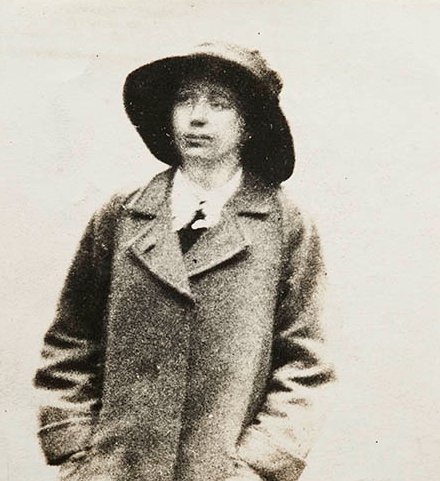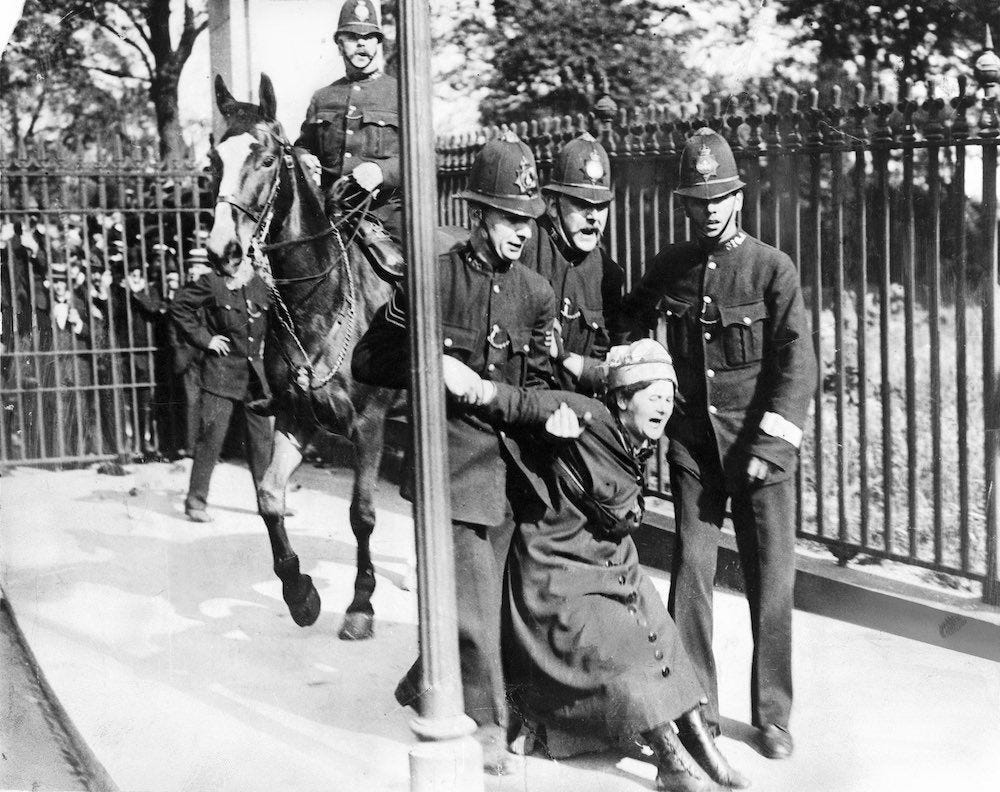The Birth Of Surveillance Photography
WRITTEN BY Kitty Dinshaw
Modern day surveillance photography started in Britain in 1913 with an unassuming prison van parked in the exercise yard of Holloway Prison. We only know the occupant of the van as Mr. Barrett, a professional photographer who had been employed by Scotland Yard to snap paparazzi-style shots of the women in the yard. His long-lens photography equipment — the purchase of which was authorised by the then Home Secretary — was rudimentary, but effective.


And who were these women Barrett was photographing? Members of the Women’s Social and Political Union (WSPU), also, and perhaps better, known as the suffragettes. Suffrage campaigns were ongoing in both Europe and the United States in the early part of the 20th century, with Finland being the first country to grant women the right to vote and stand for office in 1906.
In Britain, the suffrage movement began in earnest in 1903. Asking politely had got the WSPU nowhere, so they began a campaign of civil disobedience, meaning that they essentially decided to make a nuisance of themselves. This included sabotaging political meetings, demonstrating frequently outside the two houses of Parliament, and chaining themselves to the railings lining Downing Street and Buckingham Palace, among other places. In April 1914, they began entering art galleries and destroying works with patriarchal themes. In a particularly dramatic move, the suffragette Mary Richardson entered the National Gallery in 1914 and slashed “The Rokeby Venus,” a painting of the nude goddess Venus gazing into a mirror, by the Spanish artist Diego Velázquez. (It is interesting to note that the National Gallery makes no mention of the incident in its entry on “The Rokeby Venus,” despite the fact that it might be the most exciting thing that has ever happened inthat painting’s history.)
To a participant in today’s polite and well-tempered Women’s Marches, this type of anarchistic behavior may sound like a fun deviation — making your voice heard and standing up for your beliefs in a major, action-oriented way. The suffragettes’ struggle became well publicized, in part due to high visibility nature of their operations. But what could most certainly not be classified as “fun” was the extraordinary level of violence meted out to these women, even in the early days of their campaign. They were regularly dragged away from demonstrations and assaulted by the police, and subjected to mob violence by the men around them.
An example that would shock us, even now, came in June 1906. Thirty suffragettes, many accompanied by young children or carrying babies, clashed with police outside the home of Herbert Henry Asquith, who was then the chancellor of the exchequer and a member of Britain’s Liberal Party.
To offer up an official arrest record of one of the suffragettes: “A policeman proceeded to strike her with his fist, and she accordingly slapped his face. The policeman came forward and pinioned her, taking her by the throat and forcing her backwards so that she became blue in the face. With that she kicked the policeman’s shins, and was arrested.”
It is hard — almost impossible — from our 21st century standpoint to imagine this kind of violence against women who were protesting for nothing more than the right to vote.
The police were becoming more fearful, and losing control of the public sphere. The suffragettes protested noisily, out in the open and frequently. They had become a familiar sight in London, their message was spreading, and they showed no regard for authority whatsoever.
“On the one hand, the state considered them dangerous terrorists, but on the other it simply did not know what to do with them,” says Carole Tulloch, a curator at the National Archives, who has exhibited many recently accessed images from that time.

Once the suffragettes were imprisoned at Holloway, their lives became even worse. They went on hunger strikes and were then — often brutally — force-fed; their agency taken away at every turn by a system determined to suppress them by whatever means possible.
In turn, this led to the surveillance images, as they walked around the exercise yard of the prison, the women were completely unaware that they were being photographed from several feet away.
In 1871, prisons were instructed to photograph all inmates. In an act of defiance, the suffragettes refused to pose for these photographs. But, by 1913, Scotland Yard wanted their images to create a photographic register of these subversive women, presumably so they could share them with around institutions where the suffragettes often made their most public demonstrations. So, they invented the dubious art of surveillance photography. Once again, the authorities had found a new way of removing their agency from them.
In 1914, the suffragettes suspended their militant campaign and threw their energy into helping the war effort. Far from subverting the state, these women went on to work in factories, fields, and farms to support the British army in the First World War — ardly the actions of terrorists. And on February 6, 1918, they were (partially) rewarded when the Representation of the People Act was passed by British Parliament, in the very same house which they had chained themselves to in protest. It became law that women “of property” and over the age of 30 had the right to vote in elections. Full equality was still a decade away, but 1918 marked a major milestone for women’s rights in the U.K.
And as for surveillance photography, one of the many weapons used against the suffragettes? That never went away. It was far too useful a tool.
The surveillance images that you see in this article are currently exhibited alongside many more like it as part of an exhibition at the Museum of London, which holds the largest collection of material relating to the British suffragette movement in the world. I’m very grateful for their help with researching and writing this article.\
March, march — many as one,
Shoulder to shoulder and friend to friend
— The March of the Women, battle anthem of the WPSU. Composed by Ethel Smyth, Holloway prison, 1911
If you would like to find out more and get involved in the Museum of London’s Votes for Women exhibition and programme, please click here for more information, or contact Laura Archer on larcher@museumoflondon.org.uk.
WRITTEN BY
Kitty Dinshaw
Artist Director of subjectmatterart.com. I write here about what interests me: mainly art and the art-world, but also culture, and history.
https://medium.com/s/story/the-suffragettes-and-the-birth-of-surveillance-photography-d29ce0ed8bec

0 Comments:
Post a Comment
Subscribe to Post Comments [Atom]
<< Home